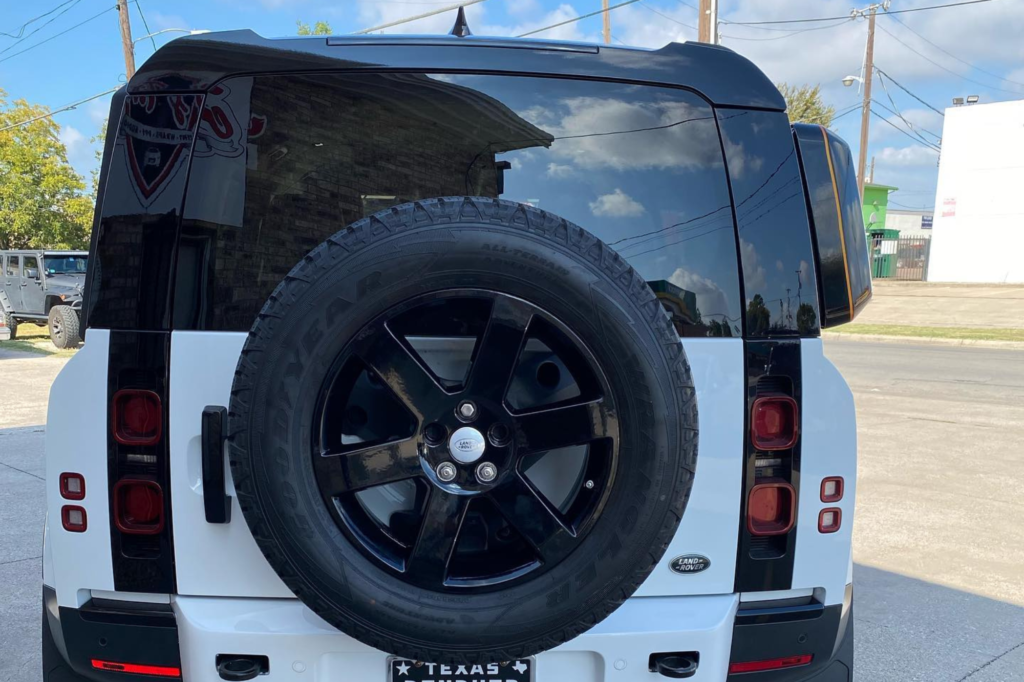Sun exposure harms your car’s interior by causing fading, cracking, and warping. UV rays degrade the color of your upholstery and leather, leaving them dull. The dashboard, especially vinyl and plastic, becomes brittle and prone to cracks. Plastic parts may warp due to heat, affecting both functionality and aesthetics. Leather loses its natural oils, resulting in dryness and cracks. Electronics suffer, too, from excessive heat, potentially damaging sensitive components and batteries. You can reduce these effects with preventive measures like UV-blocking tints, sunshades, and protective sprays. There are several strategies to protect your car and preserve its pristine condition.
Key Takeaways
- UV radiation causes fading and dullness in upholstery by breaking down dyes.
- Dashboard materials crack and become brittle from prolonged UV exposure.
- Sun exposure leads to warping of plastic parts, affecting functionality.
- Leather seats fade, dry out, and crack due to UV rays and heat.
- Electronics suffer malfunctions and degrade from heat and sun exposure.
Fading of Upholstery
When you leave your car parked under the blazing sun, you might notice the upholstery gradually losing its vibrant color. This fading occurs due to sun damage to your car’s interior, primarily caused by UV radiation.
UV rays penetrate through your car windows, breaking down dyes in the fabric, leather, or vinyl seats, leading to a dull and washed-out appearance. This not only diminishes your car’s aesthetic appeal but also reduces the material’s longevity.
To protect against UV damage to your car’s interior, consider using UV-blocking Car Window Tint
or sunshades. These act as barriers, preventing harmful rays from coming into direct contact with your upholstery.
Regularly applying UV-protective sprays specifically designed for automotive fabrics can also help. These products create a protective layer on the surface, reflecting UV rays and reducing their impact.
You might also want to use seat covers, which serve as an additional layer of protection against the sun. They can be easily removed and replaced, ensuring your original upholstery remains intact.
Cracking of Dashboard
Although often overlooked, your car’s dashboard is highly susceptible to sun damage, primarily from prolonged UV exposure. The dashboard, typically crafted from materials like vinyl or plastic, can crack over time due to the relentless assault of UV rays and heat.
These elements break down the dashboard’s molecular structure, causing brittleness and leading to unsightly cracks. If you’re in a sunny climate, like Dallas, Texas, where UV exposure is significant, protecting your car’s interior from the sun becomes essential.
Window tinting is an effective method to mitigate this damage. By reducing the intensity of UV rays entering your vehicle, window tint helps maintain the integrity of your dashboard.
Window tint Dallas Texas, services offer varying tint levels that can drastically cut down UV exposure, thereby extending your dashboard’s lifespan.
In addition to window tint, consider using a sunshade when parked. This simple tool reflects sunlight away from the dashboard, further diminishing UV impact.
Regularly applying a UV-protective conditioner can also maintain your dashboard’s flexibility and prevent cracks. By taking these steps, you guarantee your car’s interior remains in top condition, safeguarding your investment and comfort.
Warping of Plastic Parts
While addressing the threat of dashboard cracking, let’s not overlook the warping of plastic parts within your car’s interior.
Over time, prolonged sun exposure causes plastic components, such as door panels, center consoles, and air vents, to warp. Sunlight brings intense heat, which expands plastic materials. As temperatures fluctuate, these parts contract when cooled down. This constant cycle of expansion and contraction weakens the integrity of the plastic, causing it to lose its shape and fit poorly.
You might notice gaps developing between panels or parts not aligning as they should. Warping isn’t just an aesthetic issue; it can affect the functionality of your car’s interior components. Warped air vents, for example, mightn’t direct airflow efficiently, impacting your comfort during drives. In extreme cases, buttons or clips can become brittle and break, leading to costly repairs.
To prevent this, consider using sunshades and parking in the shade whenever possible. Additionally, applying UV-protective coatings can greatly reduce the risk of warping.
Regular maintenance and protection can help preserve the structural integrity of your car’s plastic parts, ensuring they remain functional and visually appealing.
Damage to Leather Seats
Leather seats, prized for their luxurious feel and stylish appearance, are highly susceptible to damage from sun exposure. When your car is parked under direct sunlight, UV rays penetrate the leather, causing it to fade and lose its original color.
Over time, the constant barrage of UV radiation breaks down the natural oils in the leather, leading to dryness and brittleness. As a result, your once-supple leather seats can start to crack and develop an unsightly, uneven surface.
The damage doesn’t stop at aesthetics. The structural integrity of the leather is compromised, reducing its lifespan and comfort. Neglected leather becomes less resilient, feeling stiffer and less inviting.
This degradation is exacerbated by the heat that accumulates inside your car, causing the leather to expand and contract, furthering the risk of cracking.
To protect your leather seats, consider investing in UV-protective seat covers or applying a high-quality leather conditioner regularly. These products help maintain moisture and form a protective barrier against harmful UV rays.
Additionally, using a sunshade or parking in shaded areas can greatly reduce sun exposure, preserving the condition and longevity of your leather seats.
Impact on Electronics
Beyond leather seats, electronic components inside your car are also vulnerable to sun exposure. Intense sunlight and heat can wreak havoc on your car’s electronics. Over time, the constant bombardment of UV rays can cause the plastic housings of electronic devices to degrade, leading to brittleness and potential cracks.
Furthermore, the heat buildup inside your car can result in electronic malfunctions. For instance, your car’s infotainment system, GPS, or dashboard displays may experience screen warping or pixelation due to excessive temperatures. The prolonged heat exposure can also cause solder joints on circuit boards to expand and contract, leading to potential failures.
You might notice that touchscreens become less responsive or even develop dead spots. Additionally, batteries within electronic devices like key fobs or remote starters can degrade faster when exposed to high temperatures, reducing their lifespan and requiring more frequent replacements.
If your car is equipped with sensors or cameras, these too can suffer from sun-induced damage, affecting their accuracy and reliability. Maintaining the integrity of your car’s electronics is essential for ensuring everything functions smoothly, so understanding the potential for sun-related damage is imperative for any car owner.
Prevention and Protection Strategies
Protecting your car’s interior from sun damage is essential for preserving its condition and value. Start by using sunshades, especially on the windshield, to block harmful UV rays and keep the interior cooler. These shades are a quick and effective way to reduce sun exposure.
Window film installation is another excellent option; it not only blocks UV rays but also cuts down on heat, making your car more comfortable and protecting the interior materials.
Consider applying UV-blocking films and coatings to protect the dashboard, seats, and upholstery. These products form a barrier against UV damage, preserving the materials’ original state.
Seat covers and floor mats are practical additions that safeguard fabrics and surfaces from fading and cracking.
Regular cleaning and conditioning of leather and fabric interiors restore moisture, preventing dryness and cracking. Opt for cleaners and conditioners designed to offer UV protection.
Whenever possible, park in shaded areas or use a car cover to minimize direct sunlight exposure, especially during peak sun hours.
In Summary
To keep your car’s interior looking fresh and functioning well, you must take proactive steps against sun damage. J’s Tint & Car Audio recommends regularly using sunshades, applying UV-protective sprays, and parking in shaded areas when possible. These simple actions can prevent fading, cracking, and warping, preserving your car’s value and comfort. Don’t let the sun silently wreak havoc—protect your investment with expert solutions from J’s Tint & Car Audio and enjoy a cooler, more vibrant ride every time you hit the road.

